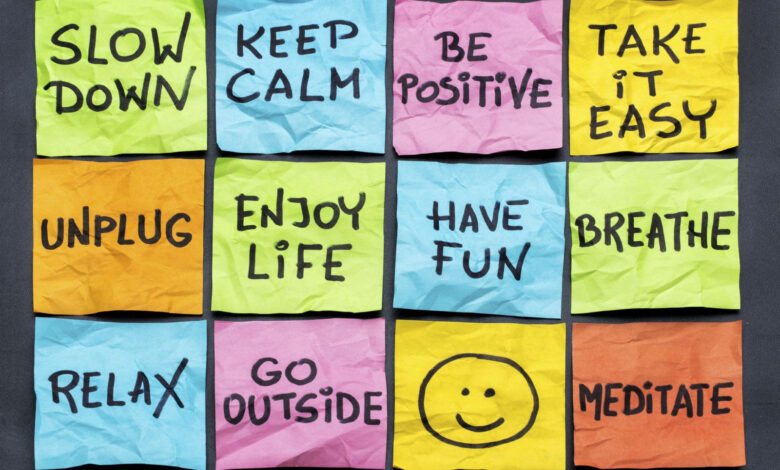Stress Relief Techniques: How to Calm Your Mind and Body Naturally

Have you ever felt like stress is running the show in your life? Maybe deadlines pile up, personal responsibilities keep growing, or even small daily hassles leave you drained. Stress is something we all face, but how we deal with it makes all the difference. The good news is that there are simple and effective ways to ease the tension and bring more balance back into your life.
In this guide, we’ll explore a wide range of stress relief techniques that go beyond quick fixes. From physical activities to mental shifts and even lifestyle adjustments, you’ll discover methods that help you feel calmer, healthier, and more in control.
Understanding Stress and Its Impact
Before we dive into solutions, it’s helpful to understand what stress really is. Stress is your body’s natural response to a challenge or demand. A little bit of it can keep you motivated, but too much, especially for long periods, takes a toll on both your body and mind.
Chronic stress can lead to headaches, trouble sleeping, weakened immunity, and even serious health problems like high blood pressure. Mentally, it can cause irritability, anxiety, and difficulty focusing. That’s why learning effective stress relief techniques is not just a luxury—it’s essential for overall well-being.
The Power of Deep Breathing
One of the simplest yet most powerful techniques for stress relief is deep breathing. When you’re stressed, your breathing often becomes shallow and rapid. Taking slow, controlled breaths helps calm your nervous system almost instantly.
A popular method is the 4-7-8 technique. Inhale through your nose for four seconds, hold for seven seconds, and exhale slowly through your mouth for eight seconds. Repeat this cycle a few times, and you’ll notice your heart rate slowing and your body relaxing.
Breathing exercises are especially helpful because you can practice them anywhere—at work, in traffic, or even right before bed.
Practicing Mindfulness and Meditation
Another powerful stress relief method is mindfulness. At its core, mindfulness is about focusing on the present moment instead of worrying about the past or the future. By training your mind to stay grounded, you reduce the mental chatter that fuels stress.
Meditation is one of the best ways to build mindfulness. You don’t need hours of silence or fancy equipment. Just find a quiet spot, sit comfortably, and focus on your breath or a calming word. When your thoughts wander, gently bring your attention back.
Over time, meditation not only lowers stress but also improves patience, concentration, and emotional balance.
The Role of Physical Exercise
Exercise is often called a natural stress-buster, and for good reason. Physical activity increases the production of endorphins—those “feel-good” chemicals that boost mood and reduce tension.
You don’t have to run marathons to experience the benefits. Even a brisk 20-minute walk can ease anxiety and clear your mind. Activities like yoga, dancing, cycling, or swimming also work wonders. The key is to find something you enjoy so it feels like a break, not a chore.
Beyond the immediate stress relief, regular exercise improves sleep, strengthens resilience, and makes daily challenges easier to handle.
Listening to Music for Relaxation
Have you ever noticed how the right song can change your mood in seconds? Music has a direct impact on emotions, making it a simple yet effective stress relief tool.
Soft, slow-paced music, such as classical or acoustic, can lower blood pressure and heart rate, helping you relax. On the other hand, upbeat tunes can boost energy and shift your mindset when you’re feeling drained.
Creating playlists for different moods—calming, energizing, or motivating—can give you a go-to tool whenever stress strikes.
Journaling as a Stress Outlet
Sometimes, the best way to release stress is to put your thoughts on paper. Journaling allows you to express worries, frustrations, or even gratitude. This process helps you process emotions and gain perspective.
You don’t need to write perfectly. Just set aside a few minutes each day to jot down what’s on your mind. Some people prefer guided prompts, like “What made me smile today?” or “What’s one challenge I want to overcome?”
Over time, journaling becomes a safe outlet that not only reduces stress but also promotes self-awareness and clarity.
Connecting with Nature
Spending time outdoors is a natural way to calm the mind. Research shows that being in green spaces lowers cortisol levels and improves mood. Even a short walk in a park or sitting under a tree can make a big difference.
If you have more time, activities like hiking, gardening, or simply watching the sunrise can bring a deeper sense of peace. The fresh air, sunlight, and sounds of nature all work together to reset your body’s stress response.
The Comfort of Social Connections
When stress builds up, isolating yourself might feel tempting, but connecting with others is one of the best remedies. Talking to a trusted friend, family member, or mentor provides comfort and perspective. Sometimes, simply sharing what you’re going through lightens the load.
Social support doesn’t have to mean deep conversations every time. Even laughing with loved ones, playing a game, or sharing a meal can boost your mood and ease tension.
Creative Outlets for Stress Relief
Engaging in creative activities can be incredibly therapeutic. Painting, cooking, playing an instrument, or even trying DIY projects allows your mind to shift away from stress and focus on something enjoyable.
Creativity stimulates the brain in ways that promote relaxation and flow. When you’re deeply engaged in a creative task, worries often fade into the background, leaving you refreshed.
Managing Stress with Healthy Lifestyle Choices
Sometimes stress relief isn’t just about quick techniques but also about long-term lifestyle adjustments. Small daily habits can significantly reduce overall stress levels.
- Balanced diet – Eating nutritious meals helps stabilize mood and energy.
- Proper sleep – A consistent sleep schedule supports mental and physical recovery.
- Limiting caffeine and alcohol – While tempting, too much of either can increase anxiety.
- Staying hydrated – Dehydration often worsens irritability and fatigue.
These choices may seem simple, but combined, they create a strong foundation for resilience.
Laughing Away Stress
It might sound too easy, but laughter is one of the most powerful stress relief tools we have. Watching a funny show, spending time with friends who make you laugh, or even practicing laughter yoga can reduce tension instantly.
Laughter triggers the release of endorphins, lowers stress hormones, and even improves immune function. It’s proof that joy is not just an emotion—it’s also medicine for the body and mind.
Time Management as a Stress Reducer
A lot of stress comes from feeling like there’s never enough time. Learning to manage your schedule better can make a huge difference.
Start by setting realistic goals, prioritizing tasks, and breaking large projects into smaller steps. Using planners, apps, or even simple to-do lists can help organize your day and reduce overwhelm.
When you feel more in control of your time, stress naturally decreases.
Practicing Gratitude
Gratitude may not eliminate stress completely, but it changes your perspective. Taking a few minutes each day to reflect on what you’re thankful for shifts focus from problems to positives.
You can keep a gratitude journal, share daily highlights with a friend, or simply pause and acknowledge small joys. Over time, this practice builds resilience, making it easier to cope with challenges.
Breathing Space: The Power of Short Breaks
Pushing through work without breaks often backfires, leaving you more stressed and less productive. Taking short, intentional breaks allows your mind and body to reset.
Whether it’s stepping outside, stretching, sipping tea, or just closing your eyes for a moment, these pauses refresh your energy and improve focus.
Think of breaks not as wasted time, but as essential investments in productivity and well-being.
When to Seek Professional Help
While self-care techniques work for many, sometimes stress becomes overwhelming and difficult to manage alone. If stress leads to ongoing anxiety, depression, or physical health problems, seeking professional help is important.
Therapists, counselors, or healthcare providers can provide tools, support, and treatments tailored to your needs. Asking for help is not a weakness—it’s a proactive step toward well-being.
Combining Techniques for Lasting Results
The best stress relief often comes from combining multiple techniques. For example, you might start your day with deep breathing, take a walk at lunch, and unwind with journaling before bed.
Experiment with different methods until you find what works best for your lifestyle. Over time, these small actions create big changes in how you handle stress.
Final Thoughts: Creating Your Stress Relief Toolkit
Stress is part of life, but it doesn’t have to control you. By practicing simple techniques—whether it’s mindful breathing, exercise, journaling, or laughter—you can reduce tension and improve your overall quality of life.
The key is consistency. The more you practice stress relief techniques, the more natural they become. Think of it as building your own personalized toolkit for calm, balance, and resilience.
So the next time stress tries to take over, you’ll be ready—not with panic, but with practical strategies that bring peace back into your day.



